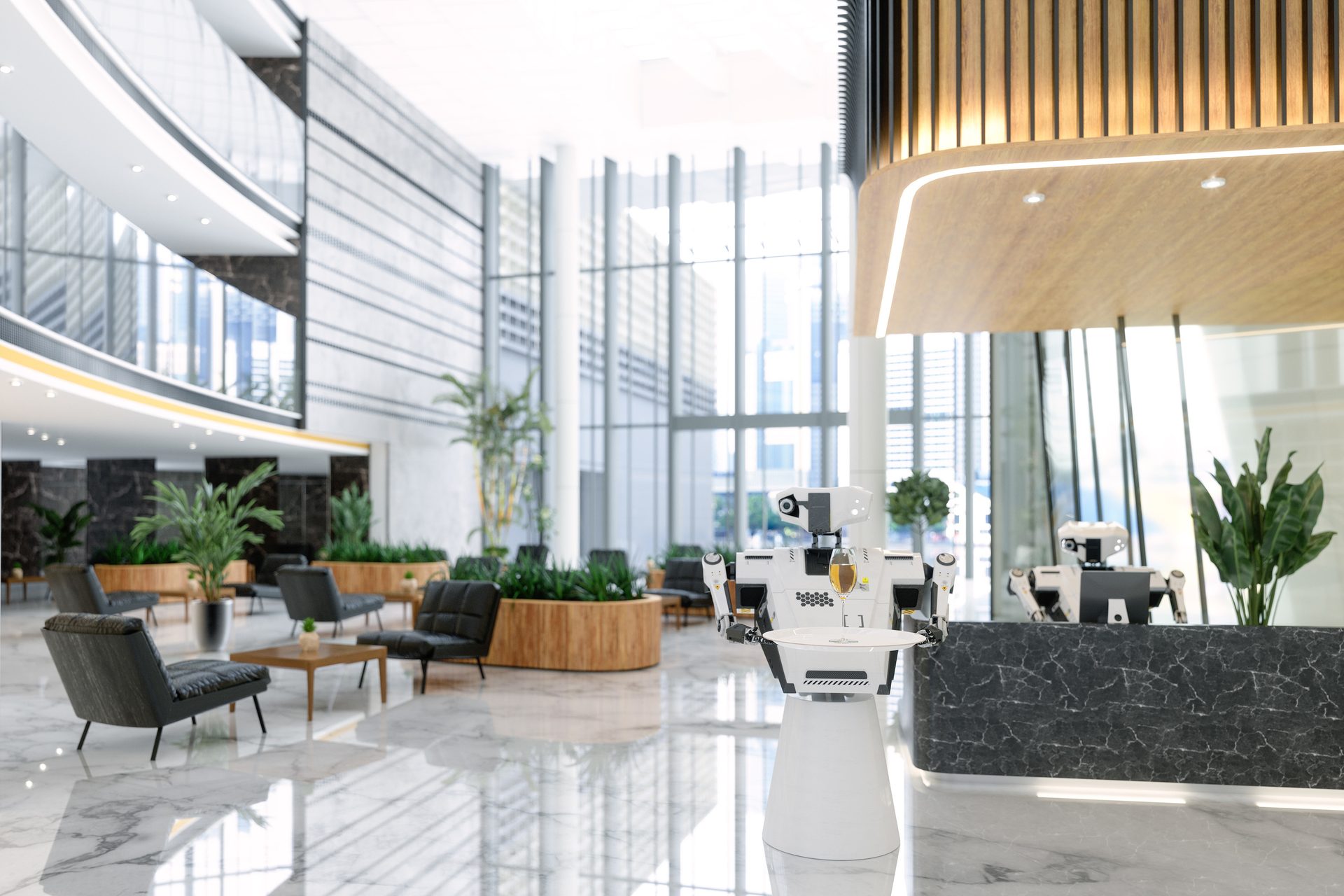april 2023

Integrated Solutions
By Steve Reinharz, Contributing Writer
Integrating human and autonomous guarding into a comprehensive security system can enhance protection.
A New Era in Property Protection: Security Officers & Security Robots

onurdongel / E+ via Getty Images
Artificial intelligence (AI) technology has made its way into the security industry in a number of applications, including with the use of AI-powered autonomous security robots. While security robots have brought a number of advantages to enterprise security posture, there are concerns about the impact of autonomous security robots on the traditional human security guards and their future role.
However, it is possible for human security guards and autonomous security robots to coexist and collaborate to provide facility protection. With the combination of human intuition and machine intelligence, these two security forces can complement each other and elevate enterprise security levels.
As this technology continues to advance, the use of autonomous security robots is growing. These devices can help security professionals cover large areas and monitor for potential threats around the clock. Whether it's patrolling the perimeter of a property or monitoring specific areas such as entrances and exits, security robots can bolster security in many areas.
How Security Robots Aid Safety Efforts
One benefit of using autonomous robotic security devices is increased efficiency. These devices can operate without the need for breaks or time off and they can be programmed to respond to specific threats or situations. For example, a robotic security device could be programmed to detect and respond to the presence of an unauthorized individual in a restricted area, such as a parking lot after work hours. In addition, they can provide autonomous responses to perimeter breaches or the detection of unexpected situations, which can be valuable in large facilities or public spaces where it may take time for a human security guard to reach the location of the emergency.
These types of autonomous responses, whether visual alerts, such as flashing lights and displays, can draw attention to potential threats and distract and deter individuals from engaging in illegal activities. Sirens and pre-recorded audible messaging can also serve as an effective deterrent, as they signal that the area is being monitored and that any unauthorized activity will be detected and reported. Robotic security devices can be an effective way to discourage individuals from attempting to enter a property without authorization or engage in illegal activities, such as vandalism or theft.
A guard whose job might be to check in visitors in a lobby is performing the repetitive task that requires verifying the visitor’s identity, confirming their appointment or purpose of visit and logging visitor information into a system. This process can be time-consuming and prone to human error.
An AI-powered device, such as a check-in robot or an advanced visitor management system, can help streamline this process. The device can quickly verify identity using tools such as barcode or other ID scanning, automatically log information into a secure database and provide a digital record of all visitors. Additionally, the autonomous device can handle a high volume of visitors at great speed, reducing wait times and increasing efficiency.
Another advantage of AI-powered security robots is their ability to continuously learn and adapt. As they collect data and analyze patterns of activity, robot accuracy and effectiveness can improve over time. This means that robots can become more adept at detecting and deterring potential threats, which can help to further reduce crime and secure properties.
“Robotic security devices can be an effective way to discourage individuals from attempting to enter a property without authorization or engage in illegal activities, such as vandalism or theft.”

One of the most enduring and notable benefits of utilizing autonomous security robots is the cost savings. The cost of hiring and maintaining human security guards can be significant, especially when considering factors such as benefits and paid time off. In contrast, autonomous security robots can be operated at a substantially lower cost, making them a more cost-effective solution. This is particularly appealing for organizations looking to reduce payroll expenses or secure large areas with limited budgets.
Employee absenteeism continues to pose a significant challenge for the security industry. The absence of security personnel can lead to a heavier workload for remaining employees, decreased operational efficiency and potential security lapses. The cost of finding adequate staff to fill in for absent employees and the disruption to daily operations can also be substantial. In comparison, the autonomous security robot can remain on duty 24 hours a day.
Working Together to Boost Security
Human security guards still play a vital role in maintaining a secure environment. While security robots are capable of detecting potential threats, currently they lack the ability to interpret and understand the context of a situation. For example, they may detect a group of individuals loitering in an area and alert security personnel, but they cannot determine whether their presence is a genuine threat or simply a group of friends.
In situations where an autonomous device has detected a potential threat, a human security guard could be notified by the device and then can approach the individuals and assess the situation, possibly defusing any potential conflict before it escalates. Additionally, human security guards can provide guidance and support to individuals on the property, helping to calm the situation and provide a sense of security. Robotic devices, while able to detect and respond to threats, are not yet able to provide this level of personal interaction.
One way that traditional human security guards and security robots can work together effectively is by utilizing each other’s strengths. This combination of technology and human expertise can help to create a more comprehensive and effective security system.
While autonomous security robots can help enhance security and increase efficiency, they are not yet able to entirely replace traditional human security guards. By integrating both into a comprehensive security system, it is possible to leverage the strengths of both and provide a higher level of protection. Traditional human security guards bring the ability to assess situations, take appropriate action and provide personal interaction, while robotic devices can continuously monitor for potential threats and autonomously respond to any suspicious activity. By working together, both man and machine can coexist and provide a higher level of protection, at an overall reduction in cost for properties. Embracing this partnership can shape the future of security and create a safer world for all.

About the Author
Steve Reinharz is CEO of Artificial Intelligence Technology Solutions, Inc. (AITX) and its wholly owned subsidiary Robotic Assistance Devices, Inc. Bio image courtesy of Reinharz

april 2023 / SECURITYMAGAZINE.COM

